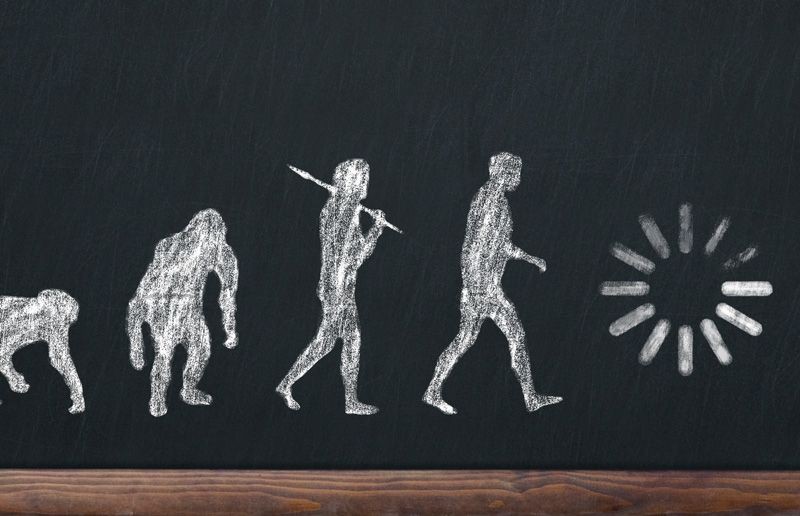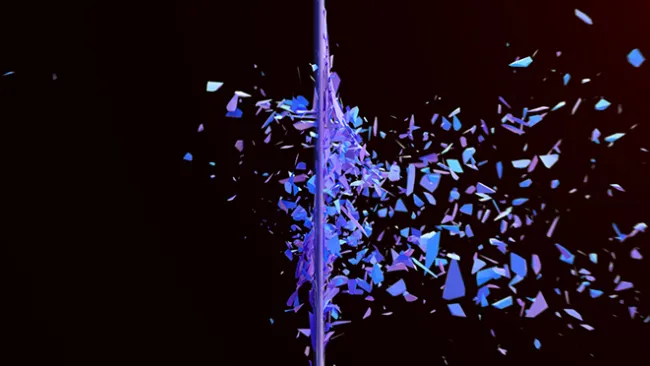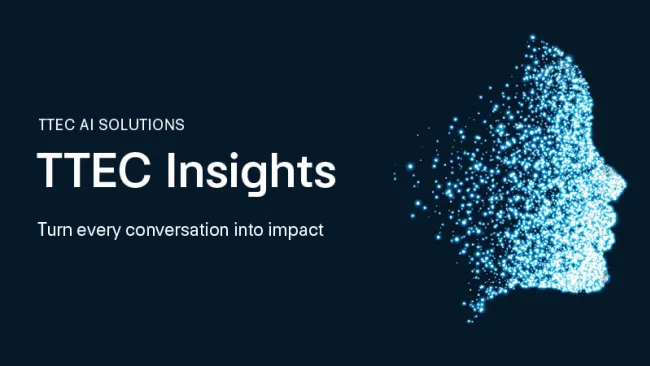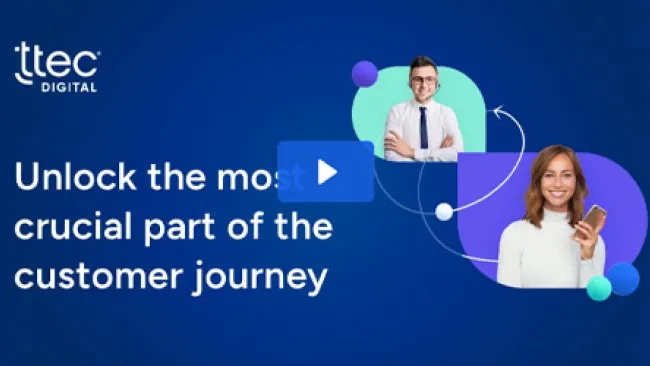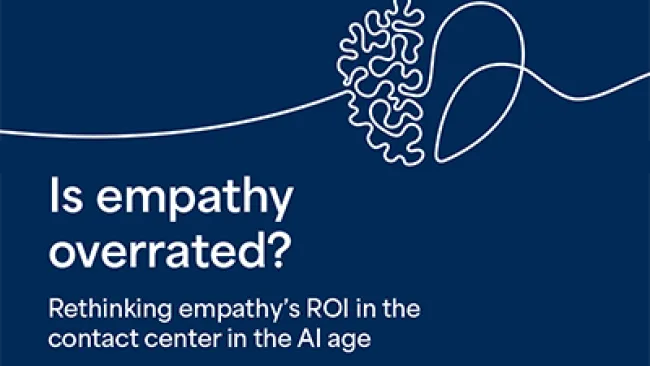If there’s a constant in the evolution of the customer experience, it’s that companies are always—and should be—striving to make that experience the best it can be for customers.
Fortunately for these companies, they have been getting an assist from the technology world, represented by innovators driven to find the easiest way to accomplish our everyday tasks.
“There’s something inherent in human behavior to try to find an easier way to do things,” says Paul Hagen, a senior principal with West Monroe Partners LLC, who oversees the company’s customer experience and innovation strategy.
There’s no question that the web has contributed to the ease of many customer experiences today. It’s expanded to mobile devices and apps, as more consumers get things done with just the tap of a finger.
This trend has touched most consumer-facing industries. From automotive and banking to healthcare and travel, companies in these industries have taken the task of simplifying the customer experience to new levels. Here, we take a look at how the customer experience has evolved in these industries, and exactly how it is becoming easier to do just about anything.
Seeing a doctor
Have you not visited your doctor’s office when you were sick because you felt your symptoms weren’t as painful as making the appointment?
Today, the doctor-patient relationship is becoming much less complicated thanks to technology. Years ago, the only way to make a connection with the family physician was to place a phone call and wait on hold only to leave a message for the physician to return the call. Now, online patient portals enable patients and their physicians to easily send messages back and forth to each other, creating a very open relationship.
But when patients decide they need to reach out to the physician’s office to schedule face-to-face time, new technology and processes make it much easier to book that slot with the physician than the traditional phone call.
This online connection between patients and their healthcare providers is helping turn the process of getting care into a more proactive one, instead of reactive. The goal is for patients to be more active participants in their current and future health. The process is becoming even easier to manage through the emergence of mobile health apps.
“With mobile apps now, they are tracking what’s going on” with a patient’s health, Hagen says. These trackers help identify potential problems before a patient even thinks to contact a doctor.
Research included in PwC’s Health Research Institute (HRI) report, “Top Health Industry Issues of 2016: Thriving in the New Health Economy,” revealed that 16 percent of consumers had at least one health app on their mobile device in 2013, and that number doubled to 32 percent in 2015. The report also noted that Millennials like health apps, and this segment would rather opt for virtual communications as their preferred channel for health conversations.
Then:
- Call physician’s office and schedule an appointment.
- Arrive early to the appointment to complete paperwork (health history and insurance information).
- Meet face-to-face with physician.
- Await follow up phone call from physician regarding further medical care.
- Call office for follow- up appointment.
Now:
- Visit physician’s website to make an appointment.
- Complete medical history and insurance forms online.
- Have face-to-face time with physician.
- Communicate with physician before and after the appointment through an online portal.
- Use a health app to manage health issues, check lab results, and connect with medical professionals.
Consumer benefits:
- Consumer has more control over interactions
- More convenient
- More efficient use of time
- Access to data in multiple channels
Buying and owning a car
In this new world of transparency, buying a car has put much of the transaction power back into the hands of the consumer. The act of buying a car now compared to years ago is much more streamlined, according to Matt DeLorenzo, managing editor at Kelley Blue Book.
“Buyers can do all of their research up front,” says DeLorenzo, noting how the traditional print versions of the Kelley Blue Book were once only available to car dealers and libraries. “Now, all of that information is much more transparent and over the web. By doing their homework up front, [consumers] have an idea of what their car is worth. It’s that wealth of information that moves the process along.”
So just where are consumers getting that information they need to make a smart car purchasing decision? It’s a true multichannel approach. According to last year’s Capgemini Cars Online report, consumers are using a variety of online channels: dealer/manufacturer (49%), search engines (43%), traditional dealership (48%), web forums (19%), social media pages (12%), and smart phone apps (9%).
Hagen agrees this change has enabled consumers to be better educated as they enter the car buying process, noting the increased visibility in inventory and price, as well as logistics. “I don’t have to buy a car nearby. I can buy a car across the country and have it shipped to me,” he says. “This is giving customers more choice, more power and more flexibility. It’s easier at a very basic level.”
Yet DeLorenzo feels the ability to literally “kick the tires” will likely not go away completely. He stresses the continued importance of the test drive. DeLorenzo expects future efficiencies behind the scenes. “There is a lot of paperwork when buying a car,” he says. “The next step is making the paperwork more seamless.”
At the same time, dealerships continue striving to make the post-purchase experience easy too. DeLorenzo notes how dealers provide such personalized services as free car washes, and shuttle and loaner car services to help keep customers satisfied after the sale. “Smart dealers are the ones who make it easy to own their cars.”
Then:
- Visit local dealership to pick up print brochures and have conversations with salespeople.
- Walk around dealership lot to find vehicle to purchase.
- Take test drive and make selection.
- Apply for loan and have dealership complete registration forms.
- Call dealership to schedule maintenance visits.
Now:
- Conduct initial research online—on general websites that feature vehicles available throughout the U.S., as well as the websites of local car dealerships.
- Research specific cars, prices, and financing options.
- Visit dealerships to test drive vehicles and make final selection.
- Complete paperwork (loans, registration).
- Schedule maintenance visits at the dealership online.
Consumer benefits:
- Enhanced self-service options
- Consumer has more control over interactions
- Improved speed of purchase process
- More transparency
Opening a bank account and accessing your money
Banking has always been about convenience. Customers would typically choose a bank based on location—if it was close to their home or the office—and the hours of operation of its branches.
People now choose their banks based on the quality and convenience of a bank’s online services. That’s how customers want to conduct traditional banking transactions, such as opening an account or managing that account.
According to a study by Accenture, the “2015 North America Consumer Digital Banking Survey: Banking Shaped by the Customer,” a good online banking experience is the main reason customers will remain loyal to their bank. Convenience “is no longer measured in miles to the branch or extra service hours—it is increasingly measured in clicks and apps,” the report states.
In fact, Forrester Research notes that 74 percent of mobile banking consumers use apps to track their account balances.
“Convenience is being redefined,” says Hagen of the banking experience. But for banking customers, the end goal is the same: get their tasks accomplished as quickly as possible and get on with their lives. “The bank has an opportunity to manage a customer’s financial life.”
Then:
- Travel to bank branch.
- Wait in line before talking to bank representative.
- Complete new account forms.
- Deposit funds.
- Use ATM to deposit and withdraw money.
Now:
- Determine type of account and complete online application.
- Deposit funds.
- Gain view of account balances, as well as deposit/withdrawal activity online.
- Transfer money online.
- Use ATM to deposit and withdraw money.
Consumer benefits:
- Consumers fit banking into their schedule
- Lots of channel choice
- Real-time information availability
Booking a trip
Everything from booking a flight to securing a hotel room is much easier for consumers today than those tasks have ever been. “It’s not just the airline flight. It’s the hotel, it’s the transportation to and from the airports,” says Hagen. “It’s all about making that whole end-to-end process easier to do.”
Whether it’s through an online travel agency (OTA) or a travel app, travelers want convenience when they book their flight and every other aspect of their trip. They want every part of the travel-planning process to be efficient and easy.
Phocuswright, a travel industry research company, notes how—through OTAs—consumers can plan their trips by looking at photos, reading reviews, and checking pricing and availability of the travel services they want. Consumers then use OTAs to close the loop by booking their flights, hotel rooms, car rentals, and more. According to Phocuswright, consumers prefer OTAs because they are easier to use. The alternative, which is still easy, is arranging travel directly through service providers—airline and hotel websites.
They all enable consumers to quickly and easily research destinations, compare prices, and make their reservations.
They also enable consumers to make travel arrangements while on the go, so they can make plans while they are actually traveling. Phocuswright predicts that more than one-fourth of online travel transactions will be through a mobile device by 2017.
Then:
- Call or visit a travel associate.
- Receive list of flights from which to choose.
- Purchase tickets from travel associate.
- Wait in line at airport to receive boarding pass.
- Call hotel and car rental company for additional reservations.
Now:
- Visit travel website, enter travel date and view options.
- Purchase airline ticket online.
- Print or download confirmation of itinerary boarding pass onto device.
- Use travel websites to book hotels and rental cars.
- Use apps to book flights, hotel rooms, rental cars, and more.
Consumer benefits:
- Consumers own the experience
- Real-time information availability
- Fewer layers of complexity
What’s next
It’s difficult to say exactly what’s next in the customer experience. But chances are things are only going to get easier for consumers. With technology and imagination as the only limitations, the possibilities to make things simpler for the customer are nearly endless.
And that’s a good thing. Our online world has made customers expect speed and ease of use in practically every transaction they conduct. It is, most definitely, a main differentiator for companies vying for their business.
With apps gaining in popularity, especially with Millennials, look for them to become an even more important piece in organizations’ quests to make the customer experience easier and more efficient. Mobile services will also continue to play a prominent role in an easy customer experience.
“Innovation keeps changing our lives,” says Hagen. “The future is only going to get more interesting for consumers. Innovators are going to constantly be looking for those places where [customer] frustrations are and continue to push progress. Can it be done better? That’s what innovators are always looking at.”

